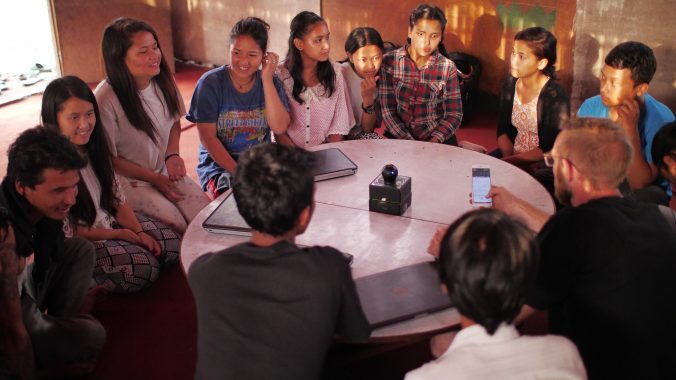Today we tried to connect with Verna Roberts but there were issues with her wifi. We spent the first half of the class in the video conference room. Half our class was in a separate room with video technology connecting them. Video conferencing is a great tool that can be used for student accessibility. Technology such as this helps enrolment and could be used more in schools. Face to Face video interactions are important as it allows fast and easy communication. Using video chats allow students and teachers to express themselves easier by using facial expressions and tones. Face to face can allow students to collaborate and actively focus. It is important for students to learn to socialize however this can be done in unconventional ways using technology.
Should a teachers teaching methods override a students need for technology use? The answer is obviously no. However, technology is one of the grey areas where some teachers may not be wiling to or may not understand how to video chat someone. Teachers may also see a students absence as the student not wanting to learn. This is not the case some students struggle with anxiety, long commutes, or sickness’. Technology can be used in these cases to provide students with the possibility to video chat into class. We were also asked the question: does modality biased exit? The answer is yes, there is a biased for face to face interaction. It is important for students to attend school and participate in their school community but sometimes this isn’t a possibility.
Schools should be flexible and if a student is accountable and wiling to learn they should be able to participate using technology. This flexibility will influence student engagement. Having solely face to face schooling is limiting learners. For the most part our society has binary thinking when it comes to face to face vs online as if it needs to be one or the other. There is another idea that it could be blended but blended does not meet mobility needs. Schools should be multi-access. This provides students with various learning methods to choose from. It may be individual if you are video chatting alone or it may be a more interactive experience if you are on campus with many others.
The Second half of the class was spent listening to presentations by peers. There were presentations on google apps, technology for students with disabilities, mindfulness apps and technology for assisted learning. The most exciting part of the class was seeing a bot in action. We learned about the different kinds of robots such as the Bean. The bot was designed to allow students to video chat into lessons.


Recent Comments